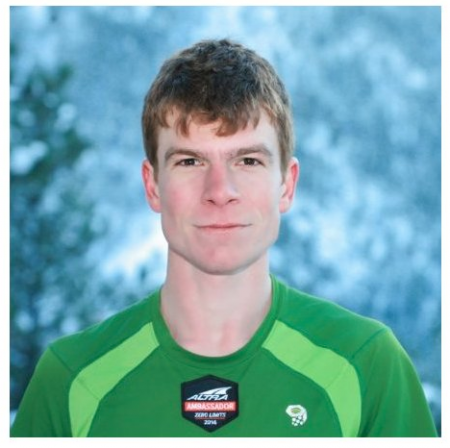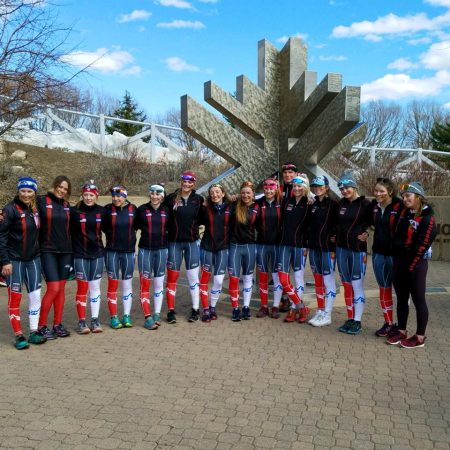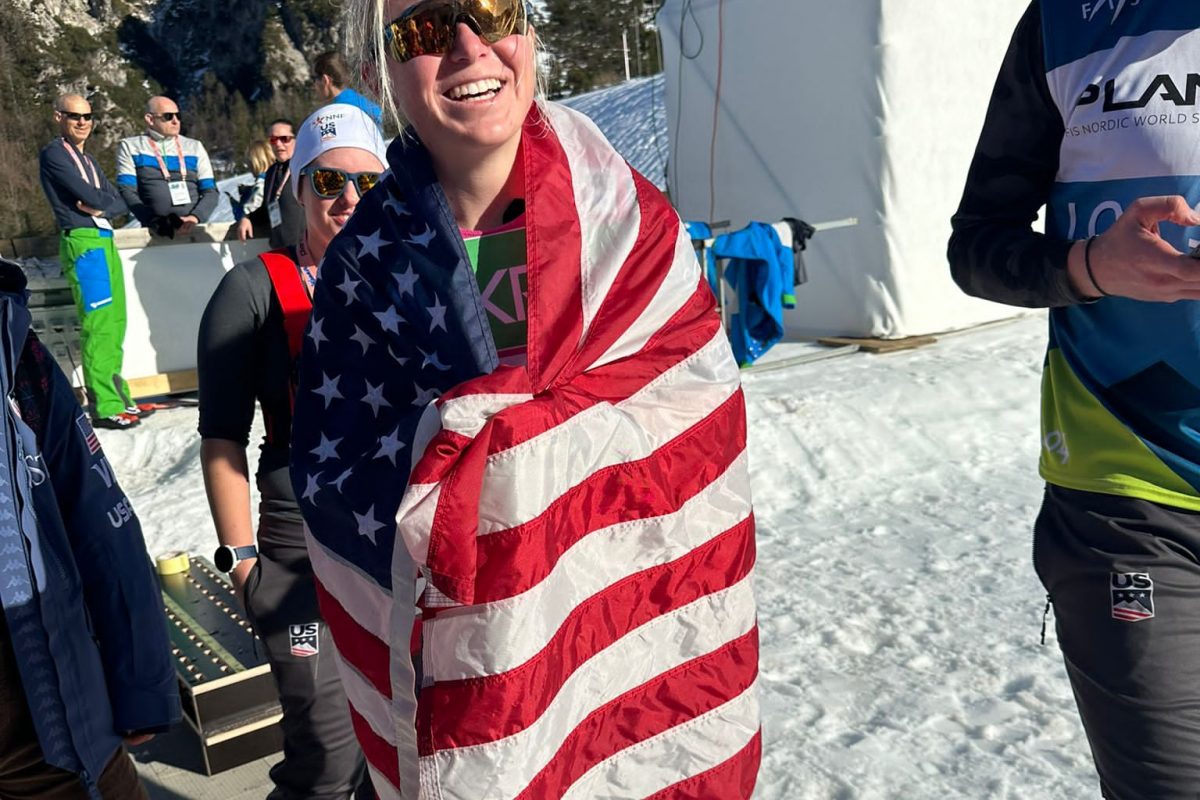
This Wednesday Workout includes guidance from Boulder Nordic Junior Race Team (BNJRT) Head Coach Adam St. Pierre. After earning a BS in Physics and Biochemistry while skiing for Colby College in Maine, St Pierre earned a masters in Kinesiology and Exercise Science at the University of New Hampshire. While in graduate school, he was the assistant ski coach to Marty Hall at Bowdoin College and has since coached all age groups. His primary role at BNJRT is working with high school aged athletes, although he has also coached the U14 development program, and also runs a private coaching business, ASTP Coaching, where he works with adult athletes, primarily in trail and ultra running. St. Pierre is also the Rocky Mountain representative to the USSA Sport Committee, instructs coaching development courses including the USSA Level 100 course, and assists with coaching at regional and national junior camps. He is currently in Anchorage, AK leading the Rocky Mountain Nordic Team at Junior Nationals trip. Additionally, he is the parent of two skiers aged five and two. In this Wednesday Workout, St. Pierre shares insight into guiding junior athletes as they progress through their career as a skier.

“Is it okay for my child to start training for skiing?” “How much training is appropriate at this age?” Whether they come from the parent of an eager U14 athlete chomping at the bit to qualify for junior nationals someday, the eager parent of a U14 athlete hoping to groom their child for elite skiing, or somewhere in between, these questions certainly make the “frequently asked” list for many junior coaches. Add to the complexity of the answer the physical development of the athlete, their list of other sports, and their dedication to skiing, and the response quickly becomes “it depends.” When it comes to blossoming U14 and younger skiers, St. Pierre likes to differentiate between formal training and general exercise.
“Training is exercise with a purpose,” he said in a call. “Exercise for the sake of exercise is good, it’s good for health, it’s good for all that stuff, but then training is when you have that goal or that long-range plan. So I think exercise is important as a youth. I don’t know if I would call what 8, 9, 10 year olds are doing training, although I guess if you want to go real general, if the purpose is to improve ski technique or improve skills, then I guess its training.
“But I think it’s important that young kids exercise a lot, whether that’s hiking, playing soccer, running around in the backyard, whatever they do,” he continued. “But from a training perspective, the younger the start [of skiing], the more likely it is that you will pick up the movements well and quickly and be able to really perfect them.”
The agility, balance, and coordination developed in other sports build an athletic foundation with age, and experience sliding on snow and enjoying winter helps to develop a love of the sport, both of which are essential components to excelling in or simply sticking with skiing long term.
“Kids need to be exposed to skiing as young as possible, but they can probably hold off until 10, 12, maybe even 14 years old until they do specific training as long as they have a good multilateral background that includes cross-country skiing, maybe even downhill skiing and ice skating, just a variety of sliding sports,” St. Pierre concluded.
As an athlete transitions from skiing purely for enjoyment to a more focused and performance-based training program, it is important for a coach to look beyond the skier’s chronological age, i.e., how old they are, to both the athlete’s biological age and training age. Biological age refers to the individual’s physical development including whether they have reached puberty, while training age refers to the number of years the athlete has participated actively in cross country skiing.
“There’s always the giant U14 or the tiny U16, and I think the training for those types of athletes is different, what they’re biologically ready for,” said St. Pierre. “I think the physical age or the biological age usually is pretty straight forward, you can tell based on their size and the way they move, but I think the training age is also fairly easy to tell. You can tell how proficient a skier is just by looking at them and if they’re able to have coordinated movements and ski with good technique. Even if they’re relatively new to the sport, it shows that they have a pretty adept handle on it.”
With these considerations, a coach can begin to write a training plan that is appropriate for that particular skier, as one size does not fit all. High volume and VO2 max efforts do not create the same response in a prepubescent athlete, so it is best to allocate time instead to shorter efforts that foster good technique and balance while skiing fast. These efforts also help the athlete acclimate to harder physical exertion than they might have previously experienced.
“I think it’s really important to include training for the individual,” St. Pierre expressed. “An athlete pre-puberty isn’t going to respond as well to 4 x 10min threshold intervals just because they don’t have the hormonal milieu to really adapt to those intervals, whereas they may be better off doing something shorter and faster to work on the neuromuscular component of how to move fast.”
At the onset of puberty, most adolescents hit a rapid growth spurt and begin to accrue lean muscle mass. Prior to puberty, this muscle mass is much harder to put on. This should be taken into account in writing a junior plan, but that is not to say that strength training should be avoided completely until puberty.
“Strength training is the other big one where the late bloomers or the athletes that are a little later to puberty – strength training for them doesn’t have the same effect for them as an athlete that is surging with hormones,” explained St. Pierre. “But they can still make the neuromuscular gains even if they are not growing bigger muscles.”
He concluded, “So I think that a lot of the training is the same, it just takes on a slightly different goal depending on their chronological age or their age in the sport.”
Once an athlete is at an age and stage of their development as a skier to begin to include strength training, St. Pierre advises including strength training on a regular basis if possible, but acknowledges that due to time constraints and travel to and from a practice venue, it is not always possible after the dryland season ends.
“If you look at the research, the ideal is two strength sessions a week for males and three for females,” he explained. The difference in frequency is due to the differing levels of testosterone which sparks muscle growth in response to the workout. “But that just doesn’t fit in logistically with many of the athletes that I work with because they have school and they have jobs and they have music lessons and many of them are really accomplished students and they just don’t have the time.
“I really prioritize on-snow training,” he continued. “I’m not willing to sacrifice an afternoon where we can go skiing to go do strength. I think strength is important, but I think on-snow training is the most important thing for junior athletes, really maximizing that time on snow.”

Perhaps unique to this generation of kids, it is not uncommon for a young athlete to compete in a variety of sports year-round, sometimes multiple sports within one season. While this benefits athlete development in the early years, it can make truly excelling in any of the sports a challenge as an athlete moves through their high school years.
“There are kids that at 10 or 12 years old that decide they want to be ski racers – whether that’s some outside pressure, parental pressure, peer pressure, or because they saw Jessie Diggins ski and they decided that’s what they want to do – and I think that’s awesome and we should nurture those athletes. But I think there’s also athletes that run cross country, and they ski, and they cycle, and if they want to compete in all of those sports or in a variety of sports through their high school years. I think that’s great, but I think for elite performance, they need to pick one that is the primary.”
For ski racing, St. Pierre feels this choice needs to take place early in their high school career for most athletes.
“I think it’s important for athletes to know and prioritize one sport over the other, but I also think it’s important that they participate in a variety of complimentary sports and activities. Usually around high school is when that prioritization has to occur if an athlete wants to be competitive in one sport, I think prior to that, you can have an athlete that plays soccer, and golfs, and swims, and skis all fairly equally.”
In an ideal world, athletes that chose to prioritize cross country skiing should be able to fully invest themselves in training by strength training regularly while also putting in the volume and interval training needed to enhance their performance. But, time and resources often inhibit this from being a reality for many athletes.
“The ultimate consideration for any athlete is time. Any competitive athlete would love to have 20 or 30 hours a week to train, but very few do. At the junior level, with school and other considerations, 10 to 14 hours a week is kind of a big ask… I like to structure as much training as can be tolerated, then the level that can be tolerated is largely dependent on their age, their training background, and their dedication to the sport.”
Looking at the weekly hours an athlete has available, a coach divides training time between low intensity volume training, technique work, and strength training. As St. Pierre mentioned, for BNJRT athletes who drive 45 minutes each way to ski, strength training in the gym often falls to the backburner during the winter in order to maximize time on snow. During his training sessions, he always includes some technique work regardless of the goal of the session for fitness.
“You can never separate technique from endurance,” he said. “If you’re skiing, there’s got to be some technique there. I like to take the first 20 – 30 minutes of practice and have a focus, maybe it’s a handful of drills or a quick technique progression as part of the warm up, then we go into the day’s workout which might just be an easy ski or it might be an interval workout.”
He elaborated, “I’ll pick a loop with a specific [technique] focus, so we’ll warm up for that focus, then on that loop I’m able to see the kids repeatedly, so I’m able to give them feedback and make corrections.”
While structured training is essential to becoming a competitive skier, it is important not to forget that fostering a love of skiing is essential for retaining youth in the sport, which will ultimately make for better skiers.
“I also think it’s important at least every other week to just let the kids go ski and have fun,” said St. Pierre. “Talk about boys and girls and school and parents, whatever else they do when they’re out of earshot of the coaches.”
Lastly, St. Pierre reflected on the mistakes he notices his junior skiers making most commonly. Unsurprisingly, it can be a challenge for adolescents to reign it in for level 1, especially with eager to improve skiers. However, this might not be as big of a concern as it might be for an older athlete putting in a larger number of training hours.
“To train a sufficient volume requires the bulk of that training to be easy,” reasoned St. Pierre. “I think a lot of juniors make the mistake of training too hard too frequently, this is especially true for our kids at altitude just because it’s hard to move forward uphill at an easy intensity… but if they’re not really training a ton of volume, that’s not really as big a mistake as it is if they’re really dedicated and really training. So often it’s the young athletes, the U14’s or U16’s maybe that are chasing around the older kids, and I think that’s not necessarily a bad thing. But once they’re U18 or U20, they should have a pretty solid idea of what easy feels like and hopefully have the fitness base to maintain easy while putting in that volume.
“I think the converse is also true,” he continued. “I think some athletes are scared to go above level 1 that they end up compromising their technique and skiing poorly and ingraining really bad habits. So I think it’s important that athletes have a balance between not killing themselves every day but also not ingraining poor technique habits by waddling around on their skis.”
Rachel Perkins
Rachel is an endurance sport enthusiast based in the Roaring Fork Valley of Colorado. You can find her cruising around on skinny skis, running in the mountains with her pup, or chasing her toddler (born Oct. 2018). Instagram: @bachrunner4646



